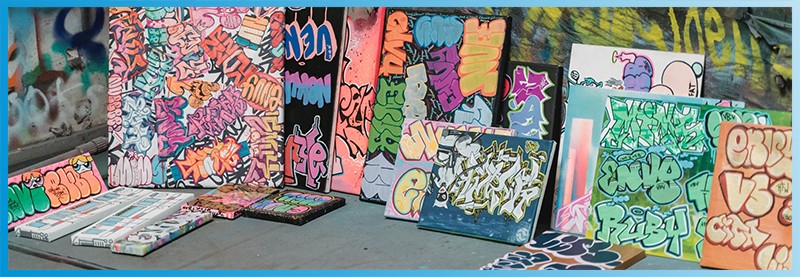Intellectual Property Insights from Fishman Stewart
Mini Article – Volume 22, Issue 7
Share on Social

Art is anything you can get away with…with limitation
When one thinks of Andy Warhol, they can’t help but visualize a painting of “Campbell’s Soup Cans”, a trippy image of Marilyn Monroe, or a colorful portrait of Mao Zedong. The use and manipulation of well-known images or icons has always gone hand-in-hand with this master of pop art. Warhol lived by the philosophy that “art is anything you can get away with,” and there is a new case challenging that statement.
The U.S. Supreme Court recently granted the Andy Warhol Foundation’s petition to hear its lawsuit regarding the late artist’s series of paintings of the musician Prince. Allegedly, Warhol created a series of paintings that incorporated a photograph without the permission of the photographer. The photographer, and owner, of the photograph’s copyright filed infringement claims based on Warhol’s unauthorized use. The Supreme Court’s decision could dramatically impact contemporary artists and the art we currently consume.
The heart of the case involves a commonly raised defense to allegations of copyright infringement called “fair use.” Under U.S. copyright law, fair use permits unlicensed use of a copyrighted work for certain purposes, such as educational , news reporting, research, and others. Moreover, fair use includes protection for “transformative use” when the unlicensed user takes the copyrighted work and adds something new that alters the purpose or character of the original work, and in doing so creates a critique, parody, or other altered form of expression. The Warhol case, which will be heard this fall by the Supreme Court, turns on this issue of transformative fair use.
In 1981, while on assignment for Newsweek, photographer Lynn Goldsmith captured images of Prince, which were never subsequently published. In 1984, Vanity Fair commissioned Warhol to create a pop art recreation of one of these photos. Warhol used the photograph to create the “Prince Series” — a set of high-contrast images infused with dramatic pops of color in a style similar to that of his “Campbell’s Soup Cans“.
Fast forward to 2017, Goldsmith objected to this use of the photograph, and a federal law suit resulted, with Goldsmith claiming copyright infringement and the Warhol Foundation arguing that the Prince Series did not infringe and constituted a fair use of Goldsmith’s photograph. The lower court sided with the Warhol Foundation. Goldsmith appealed, and the decision was reversed in favor of Goldsmith.
Now, the Supreme Court will hear each side’s argument and make its own determination. By taking up this case, the Supreme Court has the difficult and complex task of balancing the tension between protecting original works (such as a news photograph) and the freedom to create therefrom inspired works (of the type created by Warhol in this case) under the protective umbrella of transformative fair use.
It is often said that, in art, you are either the artist or the muse. So, where is the boundary between inspiration and infringement? For now, we can only wait and see where the Court will draw that line. I, for one, will be reading the briefs with a can of Campbell’s soup at the ready, and Prince’s Purple Rain playing in the background.
Published April 8, 2022


Related Content from Fishman Stewart
People have long pondered whether or not the Giza pyramids were indeed solely burial chambers, which was the only known, and archaeologically determined, use—until now.
By 1930, efforts began in New York to replace Mother's Day with Parent's Day because men were more than just breadwinners. Those efforts didn't catch on, probably because in that era, women often spent more time in the home.
In February, Nike and Skims announced that they will be working together on a new brand, NikeSkims. The co-brand will create a new line of training apparel, footwear, and accessories specifically designed to meet the unique needs of women athletes.
Generally, federal courts have exclusive jurisdiction over copyright cases, and often, this presents an insurmountable paywall for individual artists and small businesses to vindicate their rights, especially where the value of the individual copyrighted works are relatively low.
Dedicated to raising public awareness about the importance of encouraging innovation and creativity throughout the world, the World Intellectual Property Organization (WIPO) annually observes World Intellectual Property Day on April 26 to showcase the role that patents, trademarks, industrial designs, copyrights and trade secrets play in our everyday lives.
Hold onto your foam fingers, sports fans – college sports just got a whole lot more interesting! The latest updates to Name, Image, and Likeness (NIL) rules are making student-athletes bigger than ever, and it’s not just about the game anymore.
Did a federal court in Louisiana recently decide that US copyrights are global rights? It seems so.
One of his most famous songs, “Lose Yourself” was recently at the center of a lawsuit. In 2019, Eminem’s publishing company Eight Mile Style sued Spotify claiming that Spotify streamed a number of its musical compositions without proper licenses.
One of the most common challenges is whether AI should be free to train on data that is protected by copyright and owned by third parties without first obtaining permission.
The U.S. Copyright Office (USCO) recently published its latest report on AI and “copyrightability.” In short, the USCO considers only some AI-generated works to be sufficiently creative as to deserve copyright protection, and thus, registration.
IDENTIFYING, SECURING AND ADVANCING CREATIVITY®












